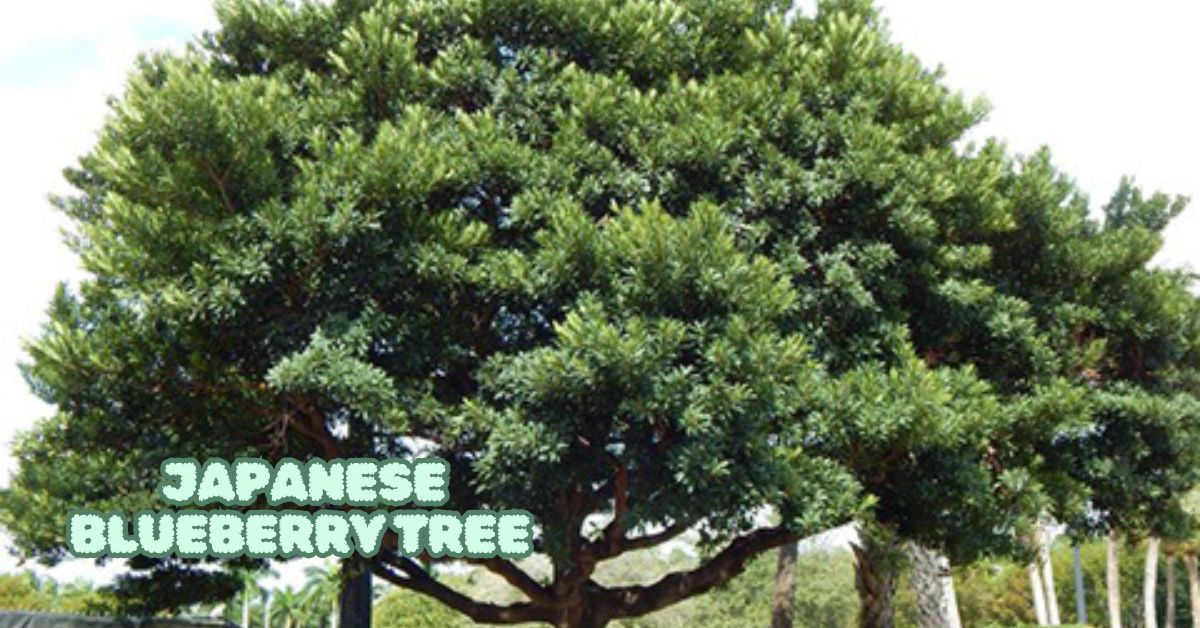Introduction
If you’re a garden enthusiast looking to add an exotic touch to your landscape, the Japanese Blueberry Tree (Elaeocarpus decipiens) might just be the perfect addition. This versatile and visually striking tree not only enhances the aesthetic appeal of any garden but also offers numerous environmental benefits. In this guide, we’ll delve deep into everything you need to know about this remarkable tree—from its history and growing conditions to its care and uses.
What is a Japanese Blueberry Tree?
Scientific Classification
The Japanese Blueberry Tree belongs to the family Elaeocarpaceae. Its scientific name is Elaeocarpus decipiens, and it is sometimes referred to as the “Blue Olive Berry.”
Physical Characteristics
The Japanese Blueberry Tree is an evergreen tree that typically grows between 20 to 40 feet tall. It features glossy, dark green leaves that are lance-shaped and can reach up to 5 inches in length. One of its most charming characteristics is its small, white, bell-shaped flowers, which bloom in clusters and give way to blue, olive-like berries.
History and Origin
Native Habitat
The Japanese Blueberry Tree is native to East Asia, particularly Japan and China. It thrives in regions with mild, temperate climates and can often be found growing in forests and along riverbanks.
Historical Significance
Historically, the tree has been valued for its ornamental appeal and its resilience in various environmental conditions. In Japan, it is often planted in temple gardens and public parks.
Growing Conditions
Climate Requirements
The Japanese Blueberry Tree prefers a subtropical to temperate climate. It is hardy in USDA zones 8-10, making it suitable for many regions across the United States.
Soil Preferences
This tree thrives in well-draining soil with a slightly acidic to neutral pH. While it can tolerate a range of soil types, loamy soil enriched with organic matter is ideal.
Light and Water Needs
The Japanese Blueberry Tree requires full sun to partial shade. It needs regular watering, especially during dry spells, but it is also drought-tolerant once established.
Planting the Japanese Blueberry Tree
Best Time to Plant
The ideal time to plant a JapaneseBlueberry Tree is during the early spring or fall when temperatures are moderate, and the tree can establish its roots before facing extreme weather.
Step-by-Step Planting Guide
- Choose a location with adequate sunlight and well-draining soil.
- Dig a hole twice as wide and just as deep as the root ball.
- Place the tree in the hole, ensuring the root ball is level with the ground surface.
- Fill the hole with soil, gently tamping it down to remove air pockets.
- Water thoroughly to settle the soil around the roots.
- Apply a layer of mulch to retain moisture and suppress weeds.
Care and Maintenance
Watering Schedule
Regular watering is crucial during the first few years after planting. Once established, water the tree deeply once a week, adjusting based on rainfall and seasonal changes.
Fertilizing Tips
Feed your Japanese Blueberry Tree with a balanced, slow-release fertilizer in the spring. Avoid over-fertilizing, as this can lead to excessive leaf growth at the expense of flowers reaching its mature height of 20 to 40 feet over a span of 10 to 20 years, depending on growing conditions.
FAQs
- Are the berries of the Japanese Blueberry Tree edible?
- The berries are not commonly consumed and are generally considered inedible. They are primarily ornamental and can add visual interest to your garden.
- Is the JapaneseBlueberry Tree toxic to pets?
- There are no widely reported cases of toxicity, but it’s always best to keep an eye on pets around new plants and consult with a veterinarian if you have concerns.
- Can I grow a JapaneseBlueberry Tree in a colder climate?
- The tree is best suited for USDA zones 8-10. In colder climates, it may suffer from frost damage. Consider growing it in a container that can be moved indoors during the winter months.










